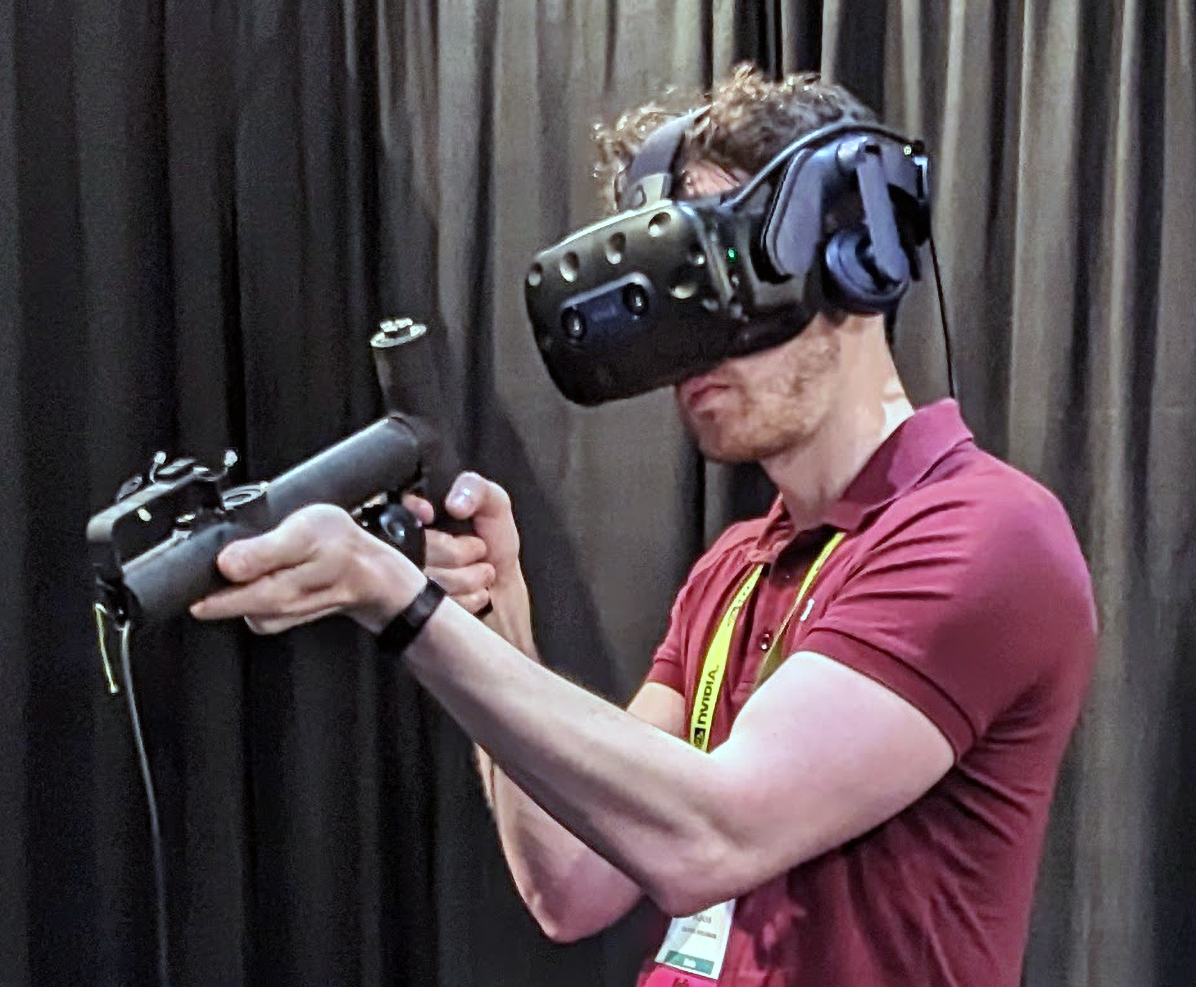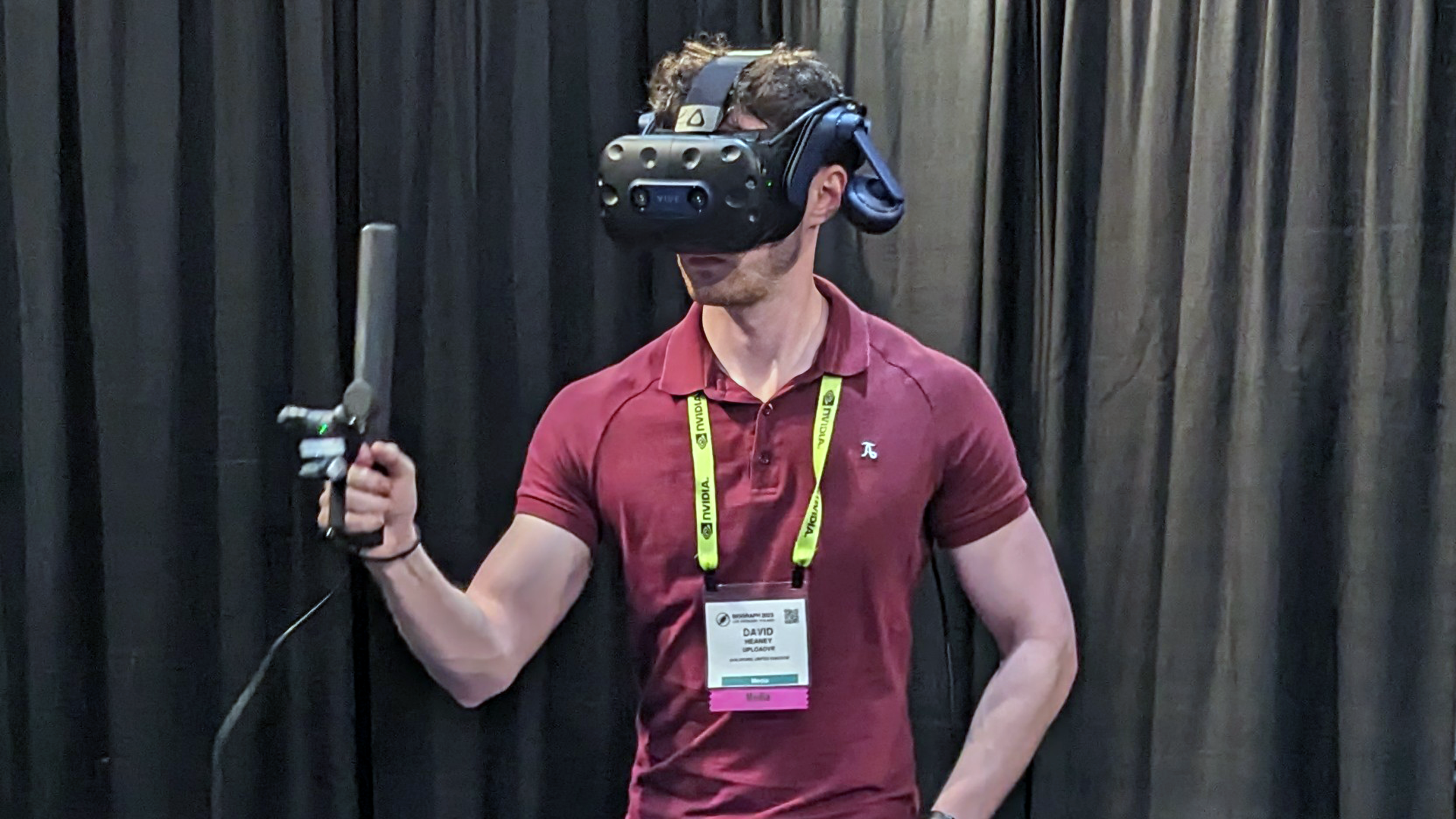Sony researchers built prototype VR controllers that can adapt to different use cases, and I got to try them.
The controllers explore two innovative ideas. First, they can dynamically adapt their center of mass in real time by shifting a weight internally. Second, you can use them separately or attach them together in various configurations to act as different kinds of objects.
Since the researchers are building a haptic system, not a tracking system, the controllers were tracked by strapped-on HTC Vive trackers, with base stations set up in each corner. For testing and demoing they used a HTC Vive Pro 2 headset tethered to a gaming PC – not a PlayStation VR headset or PlayStation console, as these researchers work separately from those product teams, and prototyping on a PC is far more convenient.
By altering the configuration of the controllers, I was able to hold and use three highly convincing virtual objects: a sword, a shotgun, and an umbrella, showing the versatility of this approach.
The umbrella was actually the most compelling. With both controllers attached together longways, I could feel the precise haptic feedback from raindrops. When the umbrella was furled, I felt all the weight near my hand, and when unfurling it, I could truly feel the weight move to the end. This was the most remarkable of the three demos because of how noticeable and dramatic the weight shifting was.

Now, I know the question a lot of you will be asking right now: will any of this eventually come to a PlayStation VR3 or other future VR system from Sony?
While the specific controllers I tried are solely being billed as a research project, Sony has shown a strong interest in VR haptics with PlayStation 5 and PSVR 2. Sony included high-fidelity actuators in the controllers and introduced both resistive triggers and in-headset vibration, delivering a new kind of immersion not available in other VR systems. So I wouldn’t be surprised to see Sony incorporate novel haptics in its future XR devices – but could that really include weight-shifting and modularity?





